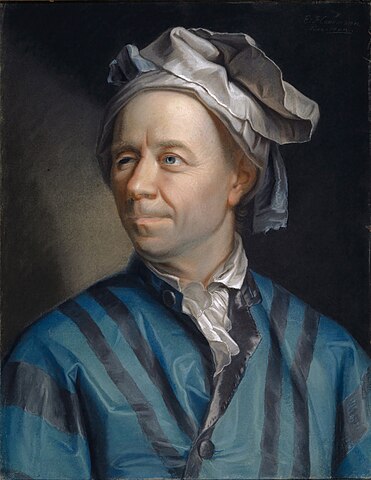Euler's Identity
One of the most famous equations in mathematics is "Euler's Identity":
Let's unpack this just a little:
- e is a transcendental constant like pi (π) and almost as famous.
- i is the square root of -1. There is no such thing as the square root of negative numbers, but mathematicians have 'imagined' them anyway, calling them 'imaginary numbers'. They turn out to be surprisingly useful in both math and science.
- π is the famous constant. The idea that the ratio of a circle's circumference to its diameter is a constant value goes back to at least the Babylonians. Euler named that constant 'pi' (π).
- 1 is of course the first counting number
- 0 is of course 'zero', representing nothing (?) which is really strange if you think about it.
What makes Euler's Identity so astonishing is: who would have thought there was such a provable and simple relationship between:
- e: Generally concerned with phenomena involving growth and change
- π: The ratio between the circumference of a circle and its diameter
- i: The 'imaginary' value of the impossible square root of -1
- 1: The first counting number
- 0: Nothingness
What could be more astonishing, breathtaking and beautiful than that?


Leonhard Euler (pronounced "OIL-er", 1707–1783) was a Swiss mathematician, physicist, and engineer, widely regarded as one of the greatest and most prolific mathematicians in history. He made pioneering contributions to numerous fields, including calculus, graph theory, topology, mechanics, astronomy, and number theory. He also introduced much of the modern mathematical terminology and notation still in use today.
Euler was extraordinarily productive, writing over 850 books and articles — many of them of groundbreaking. His output continued even after he became blind in one eye and later fully blind, demonstrating an unparalleled ability to perform trailblazing mathematical reasoning in his head.
Publication of his complete works, the Opera Omnia (Latin for 'complete works') began in 1911 and is still not complete. Euler's writings are dense and written in Latin, French and German, using the old German Kurrent handwriting system (based on medieval cursive). They also use 18th-century mathematical notation, and span many disciplines, requiring expertise in numerous fields. Finding it increasingly difficult to find editors capable of all this, the most recent volumes have resorted to publishing digitized versions of his manuscripts.
The Opera Omnia is divided into three main series:
- Series 1 (Mathematics): 31 planned volumes (most completed).
- Series 2 (Mechanics and Astronomy): 13 planned volumes (largely completed).
- Series 3 (Physics and Miscellaneous Sciences): 12 planned volumes (partially completed).
That's 56 volumes in all.